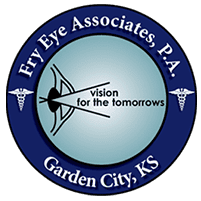Pterygium Surgery
A pterygium is a relatively common growth of the eye that can cause discomfort and vision changes. A pterygiectomy procedure involves careful removal of this growth and grafting of healthy tissue to the area to ensure proper healing.
More Pterygium Surgery Resources
Pterygium Surgery FAQ
A pterygium is a noncancerous growth of the layers of tissue (conjunctiva and tenon’s fascia) that cover the white part of your eye (sclera). The pterygium gradually grows onto the cornea (the clear central front layer of the eye) and can cause redness, discomfort and changes in vision. Excessive sun exposure without UV protective eyewear is a risk factor for the development of a pterygium.
The most common and effective procedure used to treat a pterygium done at Fry Eye is called a pterygiectomy with autograft. It Involves careful removal of the pterygium from the eye followed by placement of a small graft of healthy eye skin (conjunctiva) onto that area from another part of the eye, which helps things heal well and lowers the chance that the pterygium will grow back.
The procedure is done at our surgery center with relaxing medication (light sedation) given through an IV and a powerful local anesthesia given to the eye to thoroughly numb it. The procedure typically takes 30-40 minutes to complete and an eye patch is used to protect the eye for the first day. Medicated eye drops are used after the procedure to help with healing, which takes several weeks. Most normal activities can be resumed within a couple of days following the surgery.
Schedule Your Visit
Our doctors are here to help address your concerns about your eyes and are experts in finding solutions that work best for you.


